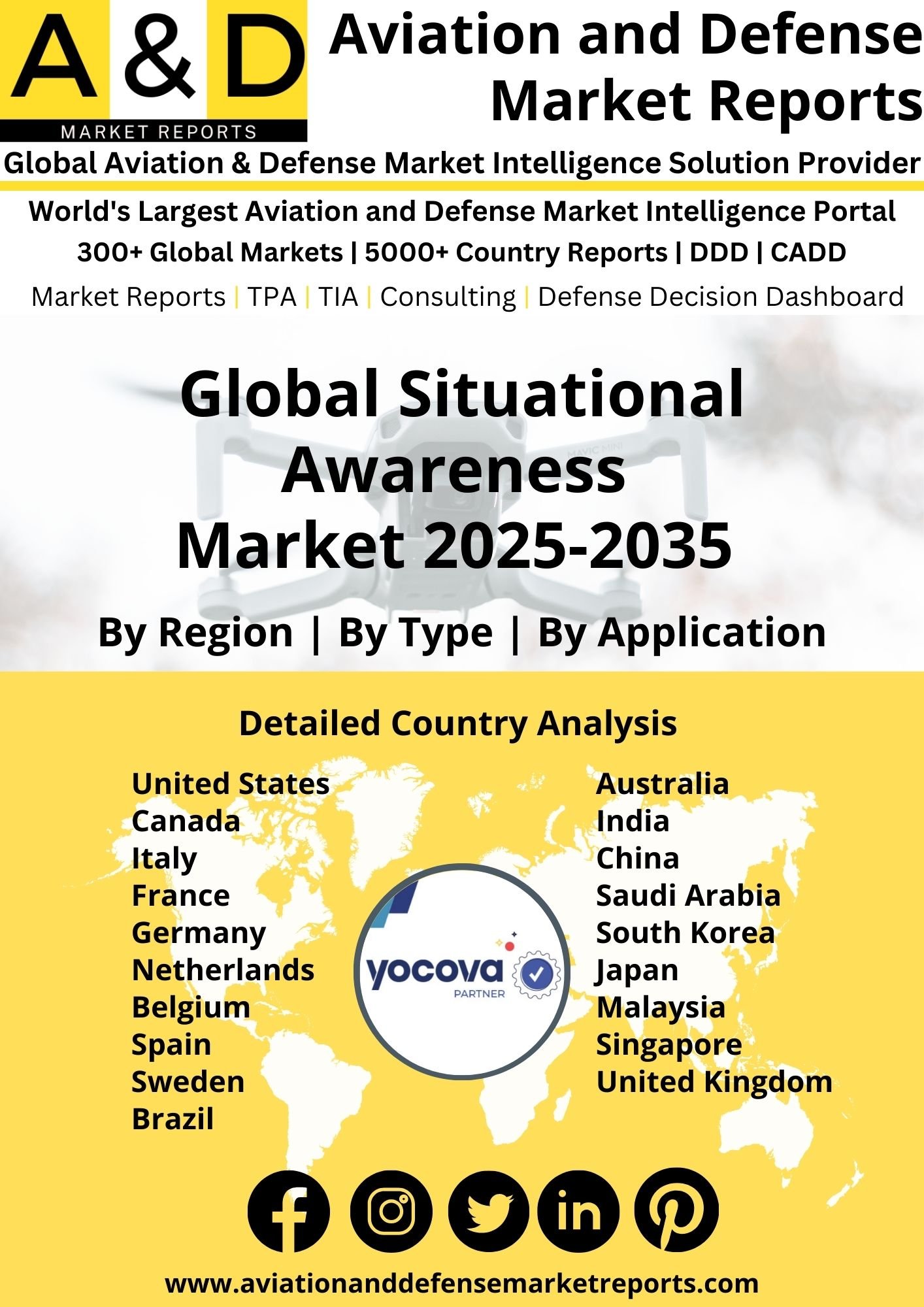Description
Global Situational Awareness Market
Defense situational awareness market refers to the ability of individuals, organizations, or military entities to accurately perceive, comprehend, and anticipate the various elements and dynamics within their operational environment that could impact their security, objectives, or mission success. This concept is crucial for making informed decisions and effectively responding to threats, challenges, and opportunities. It involves collecting, processing, and analyzing information from multiple sources to create a comprehensive understanding of the situation. Information gathering involves collecting data from various sources, such as sensors, intelligence reports, communication channels, and other relevant inputs. These sources could provide information about the location, movement, intentions, capabilities, and vulnerabilities of potential threats. Once the information is gathered, it needs to be processed and analyzed to identify patterns, trends, anomalies, and potential correlations. This can be done through advanced analytics, data fusion, and machine learning algorithms to extract actionable insights from the collected data.
Based on the processed information, a thorough assessment of potential threats is conducted. This involves evaluating the credibility, capability, and intent of adversaries or potential hazards. By understanding the threat landscape, defenders can prioritize resources and responses accordingly. In addition to assessing external threats, it’s essential to evaluate internal vulnerabilities that could be exploited by adversaries. This includes identifying weaknesses in infrastructure, personnel, processes, and technology systems. Situational awareness is an ongoing process, and continuous monitoring is crucial to detect changes in the environment and respond in a timely manner. This requires maintaining vigilance and using tools that provide real-time updates and alerts. The insights gained from situational awareness should inform decision-making processes. Effective decisions are based on a clear understanding of the situation, the potential consequences of various courses of action, and the available resources.
Information sharing among relevant parties is vital for coordinated responses. Effective communication ensures that all stakeholders are aware of the evolving situation and can collaborate on responses. Situations can change rapidly, so defense situational awareness should be flexible and adaptable to new developments. Being able to adjust strategies and tactics based on changing circumstances is key to maintaining an advantage.
Major factors driving Situational Awareness Market Growth
The situational awareness market growth has been experiencing growth due to several major factors that are driving demand for advanced technologies and solutions that enhance awareness, decision-making, and response capabilities in various domains. The evolving and complex threat landscape, including cyber threats, terrorism, natural disasters, and geopolitical tensions, has prompted organizations and governments to invest in situational awareness technologies to better understand and respond to these threats. Military and defense organizations are heavily investing in situational awareness technologies to improve intelligence, surveillance, reconnaissance, and decision-making capabilities on the battlefield. This includes technologies like command-and-control systems, radar systems, and satellite imagery analysis.
Trends influencing the Situational Awareness Market Size
Advances in sensors, data analytics, artificial intelligence (AI), machine learning, and real-time data processing have significantly improved the ability to collect, analyze, and interpret vast amounts of data from various sources, leading to enhanced situational awareness capabilities. The proliferation of Internet of Things (IoT) devices and the increasing connectivity of various systems have created opportunities to gather data from a wide range of sources, including sensors, cameras, drones, and wearables. This interconnectedness enables a more comprehensive understanding of situations. The availability of big data and the tools to manage and analyze it have empowered organizations to extract actionable insights from large datasets, enabling them to make informed decisions in real-time.
Situational Awareness Market Forecast & Dynamics
Ongoing advancements in sensors, IoT devices, data analytics, and AI were enabling more accurate and real-time data collection and analysis, leading to enhanced situational awareness capabilities. The situational awareness market saw competition from established players as well as emerging startups offering innovative solutions. This competitive landscape encouraged innovation and differentiation.
Situational Awareness Market Analysis for Recent Developments
The program office inside Program Executive Office Soldier that is in charge of managing the development of IVAS received the 20 prototypes from Microsoft. Project Manager Soldier Warrior. An all-weather combat goggle, a mixed reality heads-up display, and next-generation situational awareness capabilities are all part of the IVAS platform, which gives soldiers increased mobility and lethality both during the day and at night. Soldiers can practice, battle, and train with just one gadget thanks to IVAS.
The situational awareness market analysis is poised at the forefront of technological innovation, playing a pivotal role in diverse sectors such as defense, aviation, and public safety. Situational awareness, defined as the comprehension of environmental elements with respect to time and space, is a critical component in decision-making processes. The market is experiencing significant growth as organizations recognize the paramount importance of real-time information and actionable insights for effective risk management and operational efficiency. Advancements in sensor technologies, artificial intelligence, and data analytics are driving the evolution of situational awareness solutions. Integration of these technologies enables a comprehensive understanding of complex environments, facilitating quicker and more informed decision-making. In the defense sector, situational awareness systems enhance military capabilities by providing a holistic view of the battlefield, aiding in threat detection and response. The situational awareness market growth is marked by collaborations between technology developers and end-users to tailor solutions to specific industry requirements. As concerns over cybersecurity, natural disasters, and geopolitical tensions persist, the Global Situational Awareness Market report in 2023 signifies a commitment to deploying cutting-edge technologies that empower organizations with the insights needed to navigate dynamic and challenging operational landscapes across various sectors globally.





